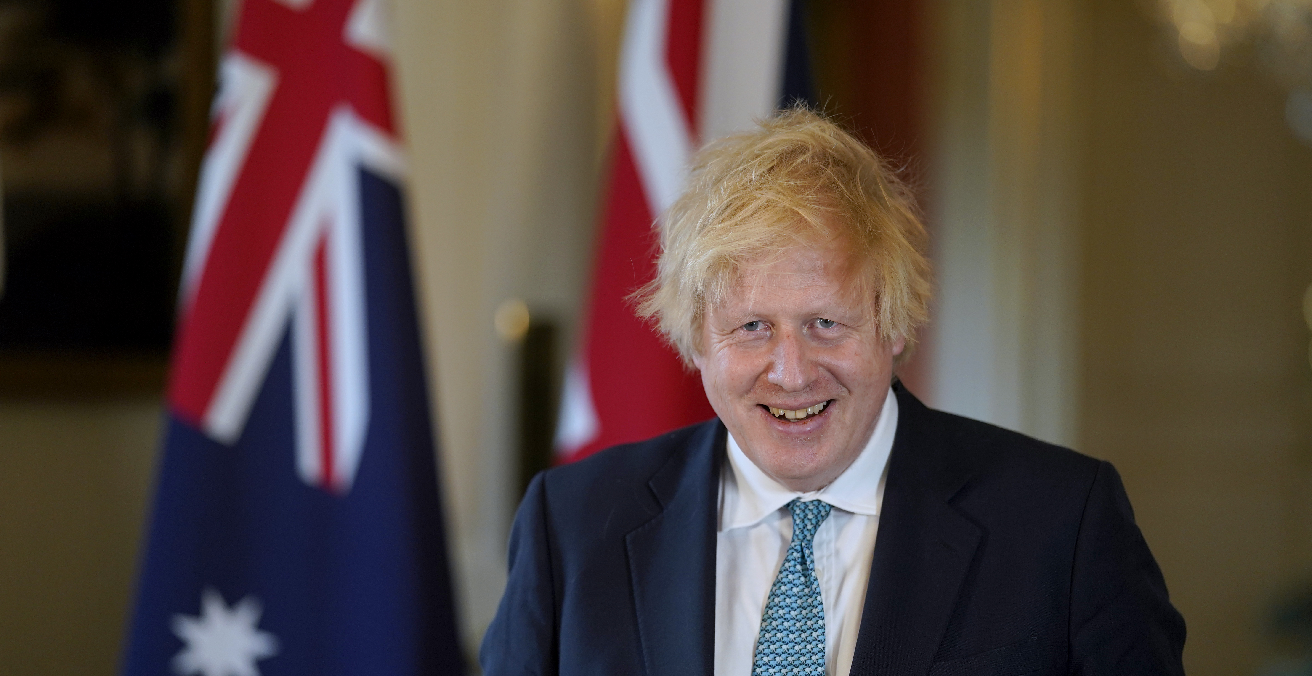Tim Tams, Wine, and Whisky – The Potential of an Australia-UK Trade Deal

Trade deals have become the single most important issue for a post-Brexit UK. As Australia is experiencing its own trade tensions, the time is ripe for an Australia-UK trade deal to become a reality.
During the Brexit campaign, one of the primary impetuses for the United Kingdom’s (UK) desire to withdraw from the European Union (EU) was to take back control of UK trade policy. With the ongoing negotiations between the UK and EU to cement an enduring trade policy in a post-Brexit environment appearing to stagnate, British Prime Minister Boris Johnson insists that the UK will flourish, no matter the UK’s relationship with the EU.
Johnson claimed on October 16 that it remains possible that the UK could enter the post-Brexit transition phase, due to expire on 31 December 2020, without a formal trade agreement. However, Johnson and his cabinet reassert that should such an event occur, Britain will be forced to trade under World Trade Organisation (WTO) rules. To mitigate the uncertainty of limiting trade flow with the EU, equating to 49 percent of UK trade, the British government is attempting to implement free trade agreements (FTA) with several nations.
It is rational to assert no single FTA will compensate for a withdrawal from the world’s largest trading block. The EU consists of nearly half the UK’s total trade percentage, and the geographical proximity between Britain and the European continent has made the UK a richer and more prosperous place to live. Indeed, the benefits enjoyed through being part of the European community have been a fundamental driver for Scottish independence and therefore should not be taken lightly. The realities of a hard-Brexit will maintain some key consequences for the British economy.
A report revealed the consequences of Britain leaving the EU without a trade agreement will result in a £16.8 billion decline per year in the manufacturing sector, namely, the automotive, technology, healthcare, and consumer industries. In accordance with these facts, Britain has stumbled upon an opportunity to take control over its free trade negotiations for the first time in over four decades. Australia appears to be one of the most important nations Boris Johnson wants to secure an FTA with. However, to understand what a potential FTA between Australia and the UK might look like, the historical context in which the relationship has been embedded in must be understood.
Historical context of the trading relationship
The Australian Department of Foreign Affairs and Trade (DFAT) signalled the historical importance the British market has played in Australia’s economic prosperity. Following the Second World War, the UK accounted for one-third of all Australian agricultural exports. However, this prevalence did not last.
When the UK joined the European Economic Community (EEC) in 1973, Australia was disproportionately affected in a negative manner. Australia’s access to the British market was withdrawn as part of a protection barrier for the European Single Market and European Customs Union. As a result, a report by James Patterson, the only Australian member of parliament who came out in favour of Brexit, has revealed that following the UK’s entrance into the EEC, tariffs and quotas imposed as a result of the Common Customs Tariff (CCT) and subsidies provided by the Common Agricultural Policy (CAP) had reduced Britain’s share of Australia’s agricultural export by 1980 to two percent. By 2015, Britain’s share sat at 1.4 percent, a significant drop from 30 percent decades earlier.
To put this in context, Australian Trade Minister Simon Birmingham commented that the impact on Australian agricultural exports was a reduction of beef exports by 96 percent, sheep by 90 percent, wheat by 99 percent, and sugar by 100 percent. Since then, Australia has pivoted export industries to Asia, in which seven out of its top ten trading partners are located.
The case for Australia
There is no secret that in recent times, Australia’s export industries have been geared towards East Asia, with DFAT suggesting that China, Japan, and South Korea alone accounted for 51.6 percent of Australian exports in 2018-19. In particular, since Australia has been engaged in a trade war with China, there have been renewed calls for Australia to diversify its export market. Because of this, there is a strong desire within the Australian government to secure a FTA with the UK, with Simon Birmingham acknowledging “The symbolism and ongoing policy benefits of nailing an ambitious agreement now, is probably more important than it has been in years.”
Flowing on from this, DFAT noted: “Australian agricultural exports to the UK have been relatively low since the UK joined the EU, due to high tariffs and other trade barriers the UK imposed as part of the EU. The opening of more choices is important for our primary producers, particularly for our post-COVID-19 economic recovery.”
At the beginning of free trade negotiations, Boris Johnson referenced the wide variety of goods traded between the two countries. In particular, Johnson highlighted the potential for the end of the dreaded Tim Tam tax, which has been an intolerable deprivation the British people could no longer endure. Similarly, Australian Prime Minister Scott Morrison outlined the benefits of a FTA as resulting in more jobs, more growth, and more prosperity for the two countries.
Beyond biscuits, the alcohol industry is a telling example of the endurance, fortitude, and potential of the deepening trading relationship. The Australian wine industry thrived in the UK despite the imposition of the CCT, and despite Britain’s close proximity to two of the world’s best wine producers, France and Italy. An additional caveat is that China, Australia’s largest wine exporter, itself placing tariffs on Australian wine, the potential for Australian wine producers is considerable. In keeping with alcohol, an FTA would also see more Scotch whisky imported to Australia, which contributes an average £114 million to the Scottish economy.
It is important to recognise that the impact of an Australia-UK FTA is predicted to benefit the UK economy by 0.1-0.4 percent, which does not appear like much. However, it would be a mistake to dismiss the significance of the FTA based on its GDP implications. What remains pertinent and continues to be so is that according to the Federation of Small Business (FSB), of all the British small businesses that export, a total of 38 percent export to Australia, which is only expected to rise upon an FTA. So, although minimal in its overall GDP impact, a comprehensive small business portfolio is worthy of consideration.
The theme of Brexit will undoubtedly shape the UK’s future for decades to come. As it decouples from the single largest trading bloc, the transition will not be without its ramifications. Britain is looking towards its Commonwealth partners, notably Australia, in securing an FTA. However, the decision to engage in FTA negotiations comes at the perfect time, when Australia itself is engaged in trade tensions and uncertainty. There is an argument that the Australia-UK FTA will more likely benefit Britain, however, Australia might need to observe its historical trading relationship in order to understand its full potential in a post-Brexit environment. For if you don’t understand where you have come from, how will you ever appreciate where you are going?
Conor McLaughlin is the Research Coordinator of the Defence Research and Engagement portfolio at Edith Cowan University (ECU). Mr McLaughlin has also worked with the Association of Foreign Affairs at Lund University in Sweden on the Brexit and Britain’s place in the modern world portfolio.
This article is published under a Creative Commons Licence and may be republished with attribution.




